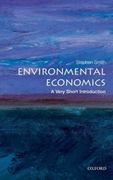Question
Please answer the question as a whole. The sooner the better. Andrew is mayor of Quaranton which has N = 100 inhabitants. This town is
Please answer the question as a whole. The sooner the better.
Andrew is mayor of Quaranton which has N = 100 inhabitants. This town is very adept at "the more, the merrier" philosophy. Therefore, each day, after spending 7 hours sleeping and 7 hours working, the citizens can choose to allocate their free time on at-home activities h or group activities g. They all have the same preferences represented by the following utility function:
U(h, g) = log(h) + log (g Healthy / 8)
The enjoyment of group activities g is proportional to the size of the Healthy population. As more citizens are able to get together, the utility from group activities increases for each citizen. This year, the world is hit by an airborne virus pandemic, and after having been exempt from cases for 3 months, Quaranton is also affected. The health department of Quaranton realizes that group activities are prone to increase the transmission of the virus among the inhabitants. It estimates that the number of sick people, after a week, is given by the following function:
Sick(h, N) = Nh / 10
Healthy = N ? Sick(h, N)
1. Recall that each day is comprised of 24 hours, and that free time activities are done after accounting for the time spent sleeping and working. Write the time constraint for a citizen in the town of Quaranton.
2. Suppose that, at the beginning of the week, the Healthy population of Quaranton is 80. There is still a lot of uncertainty about the channels of transmission of the virus, so each citizen decides on his own without taking into account the impact of his actions on other citizens. How many hours is each citizen spending at home and outside?
3. If each citizen behaves individualistically, what would be the number of Sick people at the end of the week? What would you call this phenomenon?
4. Given the guidance from the health department, the mayor of the town finally decides to take action and try to stop the spread of the virus. He decides the optimal way to spend time between home and outside during the pandemic, by maximizing the following Social Utility Function:
U^S = log(c) + log (g (N ? Ng/10 ) / 8)
The time constraint is the same as for the individual problem. What is the optimal allocation of free time from a Social point of view? Which of these solutions is feasible?
5. Suppose that the citizens are not willing to comply with the proposed allocation of time by the townhall. The mayor, as a response, decides to implement fines on outdoor group activities g by taxing the time spend on this type of activity. You can think about it as the following way: for each hour spent hanging outside, a citizen has to spend and extra ? hours at the police station to process the violation. By how much would the mayor need to tax outdoor activities for a citizen to allocate his time as in the Socially Optimal allocation?


Step by Step Solution
There are 3 Steps involved in it
Step: 1

Get Instant Access to Expert-Tailored Solutions
See step-by-step solutions with expert insights and AI powered tools for academic success
Step: 2

Step: 3

Ace Your Homework with AI
Get the answers you need in no time with our AI-driven, step-by-step assistance
Get Started


